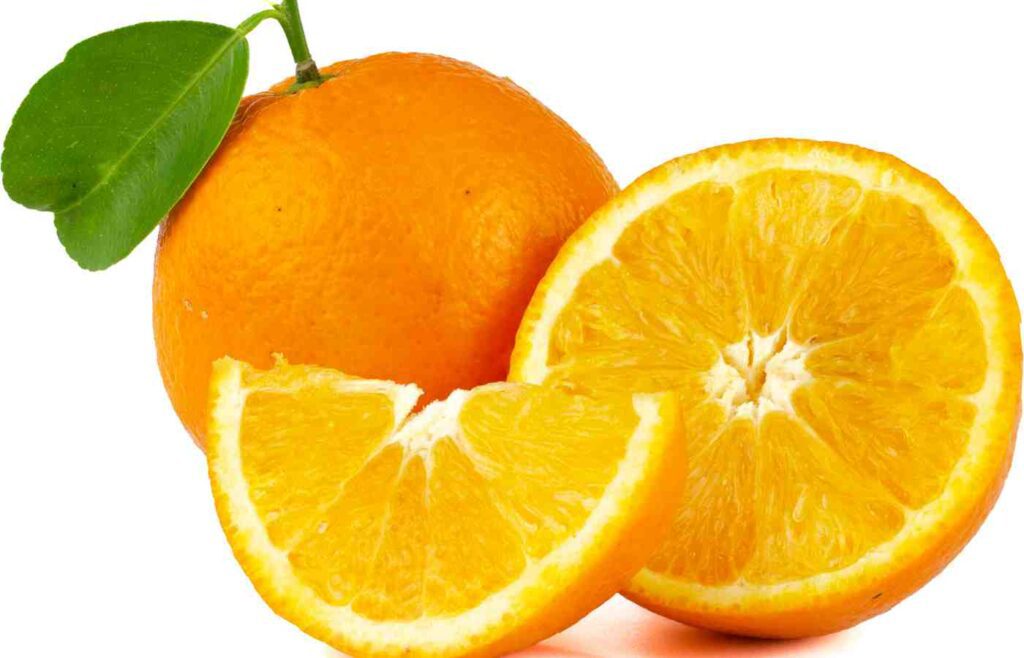Welcome, science-loving families!
It’s Calie here, ready to guide you through another delightful journey into the world of science, right from your kitchen.

Today, we’re diving into a fascinating (and tasty) experiment that not only tingles the taste buds but also sheds light on the intriguing interaction between acids and bases.
The star of our show? The humble orange, paired with a household staple, baking soda, to create an unexpected fizzy sensation.
This experiment, dubbed “Orange Fizz,” is a fantastic way to introduce young scientists to chemistry concepts in a fun, engaging, and sensory-rich way.
What You’ll Need
- An orange or clementine
- 1/2 teaspoon of baking soda
Steps to a Fizzy Discovery
- Prepare Your Orange: Start by peeling your orange or clementine and separate it into individual sections. The fresher the orange, the better the fizz!
- Dip and Bite: Dip an orange slice into the baking soda, ensuring a good coat on the pulp side.
- Taste the Fizz: Now, the fun part – take a bite of the baking soda-coated orange slice. Feel the fizzing reaction as it bubbles in your mouth!
The Science Behind the Fizz
When you bite into the baking soda-coated orange slice, you’re experiencing a classic acid-base reaction right on your tongue.
Oranges, rich in citric acid, react with the basic (alkaline) nature of baking soda (sodium bicarbonate). This reaction produces carbon dioxide gas – those tickling, fizzing bubbles you feel in your mouth.
This simple yet engaging experiment is more than just a fun party trick; it’s a hands-on way to explore the properties of acids and bases and their reactions. It highlights how opposites interact in science, creating something entirely new and exciting from simple ingredients.
Why It Matters
Understanding the basics of acids and bases is fundamental in chemistry, and this experiment offers a tangible (and memorable) way to grasp these concepts. It’s a stepping stone to more complex topics like the pH scale, chemical reactions, and even how our own bodies maintain balance between acidity and alkalinity.
Similar Experiments
Here are more experiments involving baking soda, with plenty of fizzes and pops!
Baking Soda & Vinegar Color Experiment
100 Easy Science Experiments For Kids To Do at Home
For parents and educators looking to spark a love for science in children, “Orange Fizz” is a perfect start.
It’s quick, easy, and involves minimal preparation, yet it opens the door to endless questions and discoveries about the world around us.
Happy experimenting,
Calie
Calie Herbst, Editor-in-Chief of Milwaukee With Kids, has spent over a decade combining her experiences as a parent of three to create a hub for Milwaukee’s family adventures.
Her decade-long teaching career in Milwaukee Public Schools and academic background, including a Master’s in Teaching from Marquette University and dual B.A.s in Sociology and Spanish from the University of Wisconsin – Madison, fuel her passion for inclusive and engaging family content.
Calie is also a recognized voice in local media, contributing to WISN Channel 12 News, WTMJ Wisconsin Morning News, Fox 6’s Real Milwaukee, and B93.3.
Discover more about Calie’s journey and editorial approach on her About Page and Editorial Policy Page.









